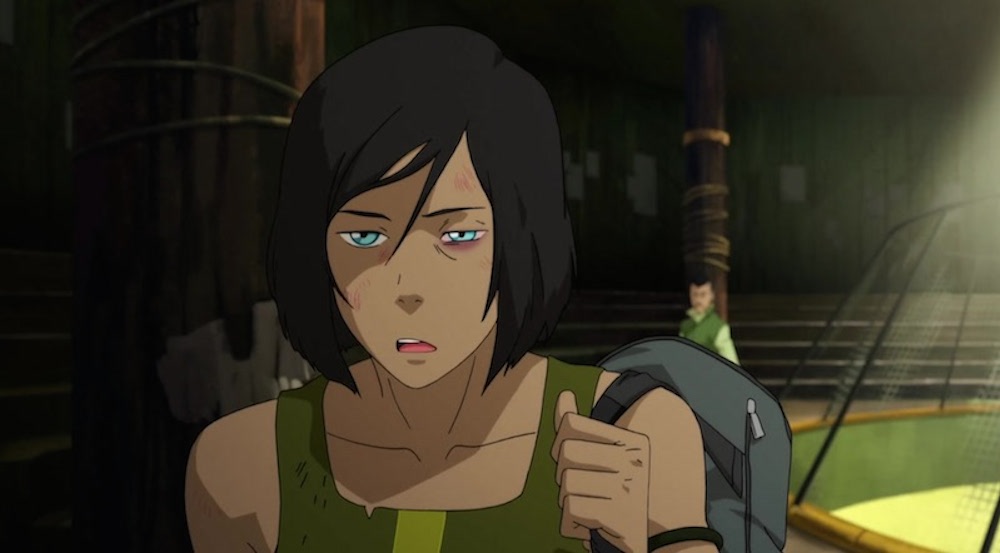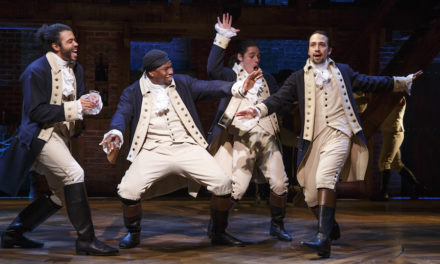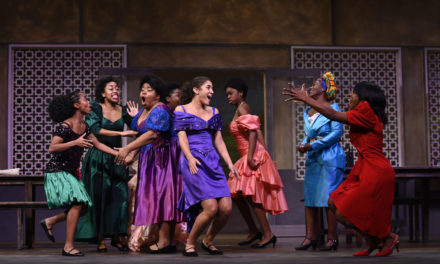Water. Earth. Fire. Air. These were the four elements that characters of the beloved “Avatar: The Last Airbender” could bend.
After the huge success of the original series, the sequel-spinoff “The Legend of Korra” debuted in 2012, furthering the “Avatar” universe. Finally, after nearly a decade, this successful Nickelodeon franchise ended on Dec. 19.
The end of the fourth season of “The Legend of Korra” most likely means the story has finally ended for these characters, and I feel it ended with a reasonably successful sendoff.
The fourth season of “The Legend of Korra” follows Avatar Korra three years after the end of the previous season, who is slowly (and unsuccessfully) trying to rehabilitate from the traumatic trials she faced.
The majority of the episodes focused on Korra’s struggle with Post-Traumatic Stress Disorder (PTSD) and her doubts over her place in the new world order.
This is the season where we as viewers see Korra at her most vulnerable. It’s not just her body that’s been poisoned; her usual confidence in her skills as the Avatar (the guardian of the physical and spiritual world who can bend all four elements) is shattered.
Korra experiences the most development in her character as she journeys to find herself and throughout her soul-searching the viewers are able to connect with her on a very personal level, fortifying Korra as a stronger character than before.
This brings me to the biggest positive in this season: Korra’s personal voyage allows us to see the changes in the characters after the three-year time skip while also bringing old fan-favorite characters together to interact.
While Korra separated herself from society, we see how the characters have evolved and moved on with their lives. It’s a process that every group of friends goes through in real life, and I was glad that the show addressed it because it allowed me to identify with the characters more strongly.
Main characters like Mako, Bolin and Asami all were at different places in their lives and their loyalties and friendships were tested more than ever before. They had different agendas for their futures, and their personal thoughts and loyalties on the new Earth empire brought tension to the group.
Overall, the change of pace was beneficial to the quality of the show as it brought drama and human heart.
However, even though the character development of the main characters improved, the same problem that plagued “The Legend of Korra” since its inception still dragged this season’s quality down.
The problem is that the main characters, though they faced great change, just weren’t interesting at their core.
Whenever these four characters, Korra, Mako, Bolin and Asami, were in the same scene together, I couldn’t help but notice that all they did was merely serve their role in a prototypical group dynamic, resulting in them just “being there.”
Mako was the silent, brooding downer; Bolin was the silly, exasperating optimist; Asami was the cool gal-pal — these are just character archetypes that we see in almost every show.
Even their bending wasn’t impressive enough to cover up these character weaknesses; many action scenes were well choreographed, but I often found myself wanting more from the main characters.
Although the main characters were still mildly uninteresting, “The Legend of Korra” remained strong in the department of secondary characters.
Characters like Varrick and Zhu Li were delightful with a quirky mania that kept the series lighthearted and fun.
In fact, I cared about this couple’s relationship more than most relationships in the series because even though Varrick was a wacky scientist who initially took Zhu Li for granted, he grew to care for her as more than an assistant.
It was a strange relationship that evolved throughout the season. Another interesting addition to the cast was the return of Toph BeiFong, a member of the original cast in “Avatar: The Last Airbender.” I enjoyed her direct, no-nonsense attitude that she retained from her prior appearances.
Her Yoda-like role when she trained Korra in the swamp was integral to the plot and the recovery of Korra’s mental health.
Finally, the main antagonist Kuvira was another superb element in this season.
Kuvira was an extremely potent bender and was very capable in political manipulation. Her physical prowess and mental precision challenged Korra and raised the stakes higher than before, especially in Korra’s state of self-doubt.
I especially appreciated the parallels that the show offered between these characters; both characters had quite a bit in common and, instead of giving us a black-and-white approach, it showed a gray area when it came to the motives of Kuvira’s admirable, albeit radical, desire to reunite the Earth Kingdom.
Finally, it’s not possible to explain the impact that “The Legend of Korra” had on me without giving my thoughts on the controversial, final scene of the show (spoiler alert).
The final scene featured Korra and Asami going to another world together and the final cut shows them holding hands, looking into one other’s eyes romantically.
It was later confirmed by the creators that Korra and Asami had romantic feelings for each other.
As for my thoughts, I didn’t particularly care that these characters were in love; I just felt that the show was very hastily forcing this relationship in order to be purposefully subversive to our expectations of their previous romances. Nothing really hinted at this relationship in the past, and it felt out of place. However, it didn’t really matter to me because “The Legend of Korra” had always been absolutely horrid with romance elements in the show.
In the end, the fourth season of “The Legend of Korra” was a decent season with many fine moments of animation and improved character development, but it didn’t resolve its weaknesses from before. However, it ended the season with an explosive grand finale. Although there were highs and lows in the emotional, human moments, it was a pretty enjoyable sequel to “Avatar: The Last Airbender.” I definitely do not regret watching this show, and it’s well-worth a watch.
— By Jake Choi, Staff Writer
The Emory Wheel was founded in 1919 and is currently the only independent, student-run newspaper of Emory University. The Wheel publishes weekly on Wednesdays during the academic year, except during University holidays and scheduled publication intermissions.
The Wheel is financially and editorially independent from the University. All of its content is generated by the Wheel’s more than 100 student staff members and contributing writers, and its printing costs are covered by profits from self-generated advertising sales.







